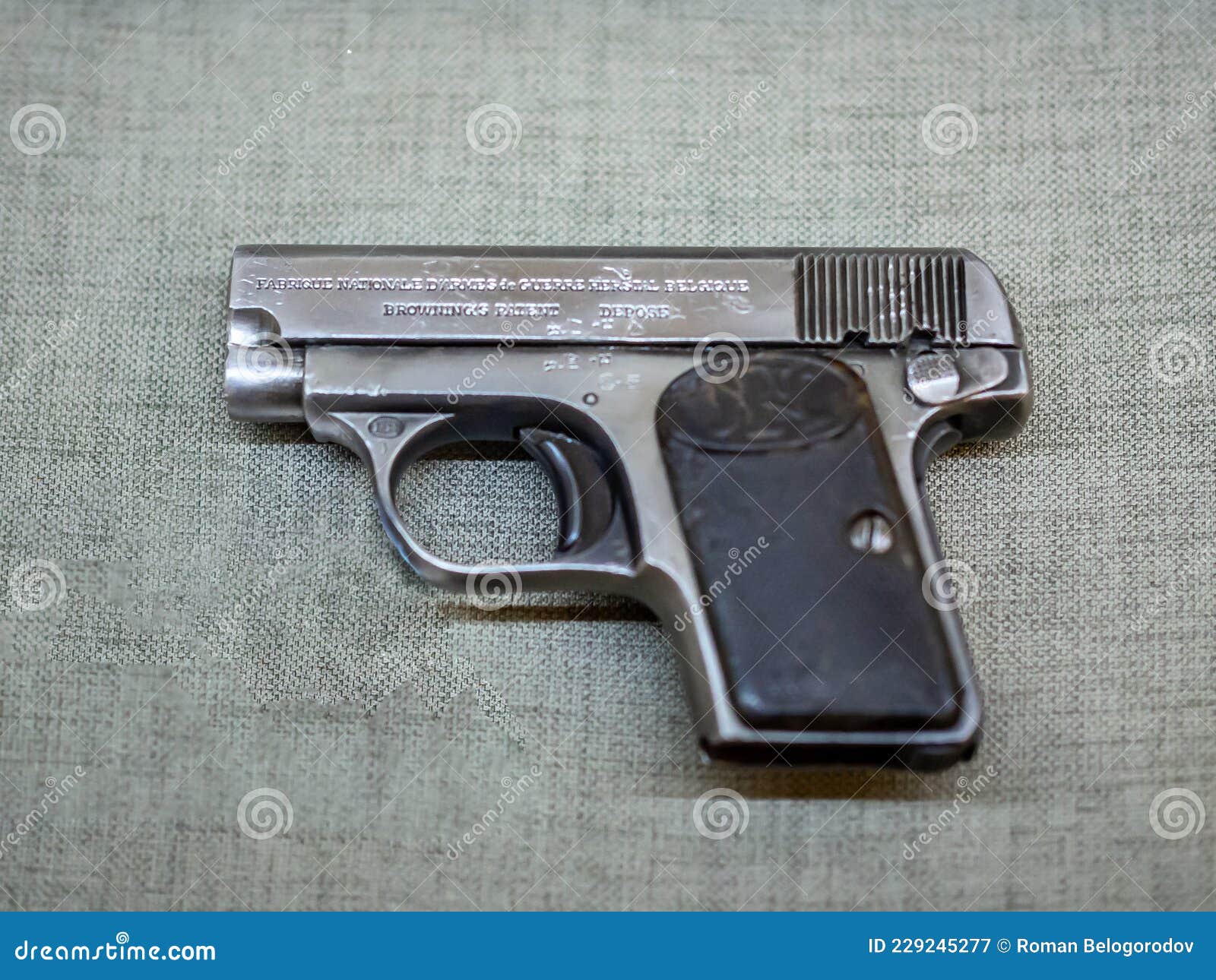

FN's Director of Operations, Dieudonné Saive (who would later design the Browning Hi-Power pistol and the FN FAL rifle) developed the new version during 1926-1927. Its basic design was used as a starting point for a new design. Pressured by the proliferation of unlicensed copies, FN began work in earnest on a successor product to the 1905 Vest Pocket pistol. In addition, this safety lever locked the slide about a half inch back from the front of the pistol to enable easy disassembly. The 1905 Vest Pocket pistol incorporated a grip safety mechanism and also a small safety lever on the left side of the frame, which locked the trigger. The shell casing was headspaced on this small rim however, the utilization of the rim in this design complicated the mechanics of the cartridge because, while still in the magazine, the rim of one cartridge would sometimes get hung up on the extractor groove of the following cartridge (also known as "rim lock"). The rim of the shell casing had a slightly larger circumference than the base of the cartridge and an extractor groove was cut directly above it. It was designed with a semi-rimmed shell casing made of brass. This cartridge was among the first automatic pistol cartridges to be utilized worldwide. The term ACP stands for " Automatic Colt Pistol". 25 ACP cartridge became widely available during this time. denoting Vest Pocket), and most confusingly, the Baby. Despite the name FN used for this pistol, it was later marketed as the FN 1906, the V.P.25 (V.P. 3.3 North American production – unlicensedįN produced under license from the American arms designer John Browning the revolutionary Model 1905 pocket pistol.3.2 North American production – FN-licensed.


 0 kommentar(er)
0 kommentar(er)
